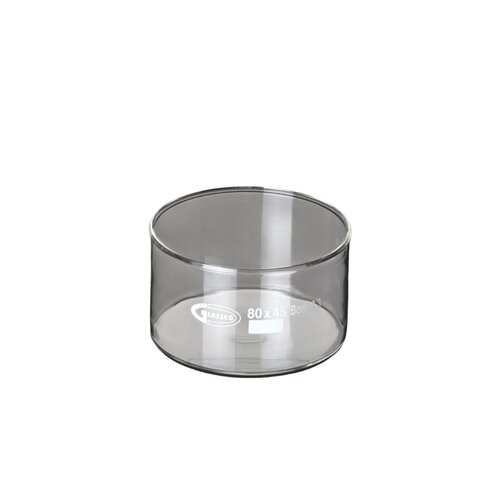A Crystallizing Dish (without spout) is a shallow, wide-mouthed laboratory vessel designed specifically for crystallization, evaporation, and drying processes. Unlike evaporating dishes, crystallizing dishes tend to have wider diameters with low walls, maximizing surface area to promote efficient crystallization of solutes from solutions. The absence of a spout means the rim is smooth and continuous, which can be preferable when pouring is not required or when the dish is used for direct observation, scraping, or transferring crystals with minimal risk of spills. These dishes are commonly made from porcelain, borosilicate glass, or sometimes plastic (for disposable types), chosen for their chemical inertness, thermal resistance, and ease of cleaning. The smooth inner surface allows easy removal of crystals and residues, and their open design facilitates slow evaporation under controlled laboratory conditions.
Technical Specification of Dishes(Crystallizing without Spout)
-
Material: Porcelain (glazed or unglazed), borosilicate glass, or plastic
-
Form: Shallow dish with low walls, no spout
-
Diameter: Typically ranges from 50 mm to 150 mm or more
-
Height: Low-profile walls (10–40 mm), proportionate to diameter
-
Surface: Smooth, chemically inert, easy to clean
-
Thermal Resistance:
-
Porcelain: up to ~1000°C
-
Borosilicate glass: up to ~500°C
-
-
Sterilization: Autoclavable for porcelain and borosilicate types
-
Finish: Usually glazed outside, sometimes unglazed inside for better crystal adherence or release



There are no reviews yet.